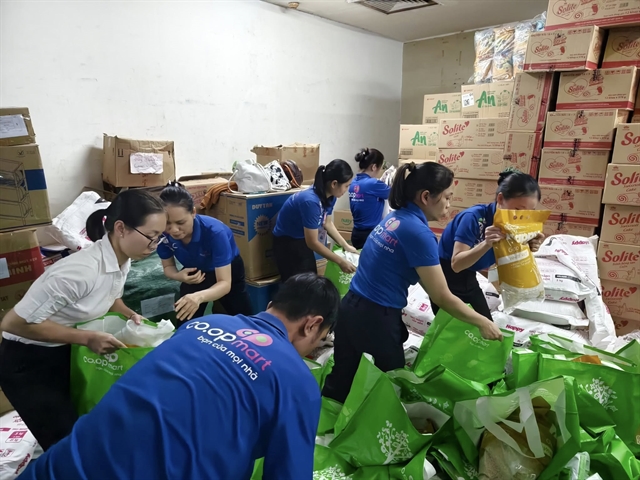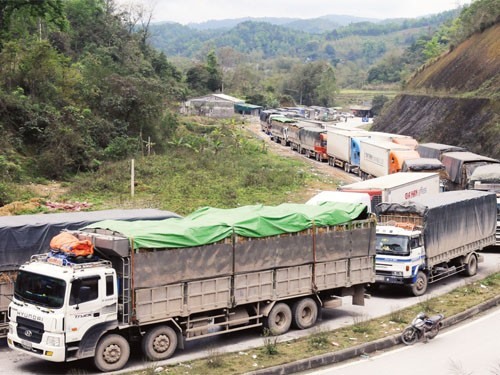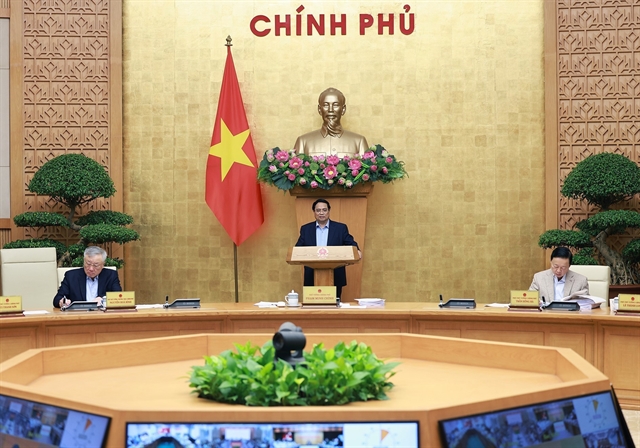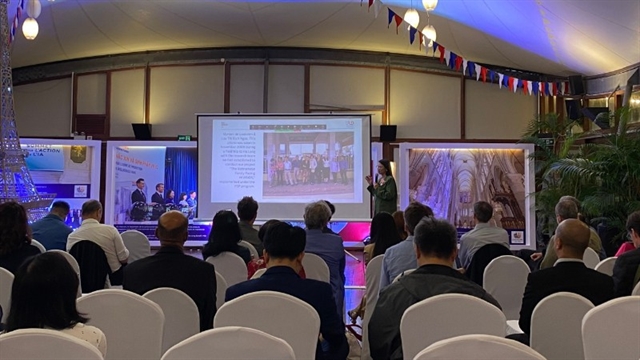 Economy
Economy

Việt Nam should implement polices to increase its export volume through its border gates with China by taking advantage of the Việt Nam-China Border Trade Agreement, experts said.
 |
| Việt Nam should implement polices to increase its export volume through its border gates with China by taking advantage of the Việt Nam-China Border Trade Agreement, experts said. — Photo vtc.vn |
HÀ NỘI — Việt Nam should implement polices to increase its export volume through its border gates with China by taking advantage of the Việt Nam-China Border Trade Agreement, experts said.
The agreement has created favourable conditions for Việt Nam’s border provinces to change reasonably their economic structure, experts said.
However, many experts were of the opinion that Việt Nam should limit shipments of small volume of exports without legal contracts, and promote large volume of exports, as small-scale exports did not provide enterprises with incentives to improve the quality of their goods and competitive ability.
Nguyễn Văn Hội, deputy head of the Border and Mountainous Trade Department under the Ministry of Industry and Trade (MoIT), said the trade agreement was signed in September 2016 with 16 articles to ensure an annual growth of 30 per cent in the trade value of goods exported through the border gates between Việt Nam and China.
The agreement will contribute partly to the socio-economic development and improvement of the living standards of the people in the border areas, he said. Việt Nam’s major export goods to China include farming, forestry, seafood and fresh fruit products.
Đinh Văn Thành, former head of the MoIT’s Trade Research Institute, said the agreement was applicable for trading via border gates and border markets in seven provinces of Việt Nam, including Cao Bằng, Quảng Ninh, Lạng Sơn, Hà Giang, Lào Cai, Lai Châu, Điện Biên, and two China’s provinces of Yunnan and Guangxi.
Nguyễn Văn Sơn, chairman of the People’s Committee of the northern mountainous province of Hà Giang, said the development of border gate economy and border trade is the key to economic development in Hà Giang Province.
To promote border trade development, Hà Giang has received recommendations from enterprises to improve infrastructure, reform administrative procedure and create favourable conditions for attracting enterprises’ investment in border trade activities.
Thành said the infrastructure at border gates was limited owing to the lack of investment, and the two countries have not had specific management policies for border trade activities because of which those activities had not developed strongly.
There are not enough warehouses at the border gates between Việt Nam and China to meet the demand of trading activities, especially cold storage system, which has not got any investment to be built.
Meanwhile, some kind of farming and fresh fruit products of Việt Nam have been exported to China, but they were not exported under contracts.
Phạm Văn Trường, a MoIT expert, said Việt Nam should restructure the production of farming products and goods to ensure the quality of those products and promote exports with large volume. This would help avoid "saving" farm produce from plummeting prices that happened over the past time, partly due to small-scale and lack of legal contracts.
The State should have specific solutions to provide market and capital support to enterprises, said Trường, adding that the State should continue negotiations with China to expand the market for Vietnamese goods by facilitating contracts for large exports .
Thành from the Trade Research Institute said Việt Nam should establish a border business association to protect the interests of local enterprises engaged in trading activities with China, as well as other countries.
The Government needs to upgrade infrastructure for trading activities at border gates, creating favourable conditions for border trade development, he added.
On the other hand, he said Việt Nam must diversify its forms and methods of trade promotion with neighbouring countries and perfect a database of information on border trade activities for managing those activities. — VNS




